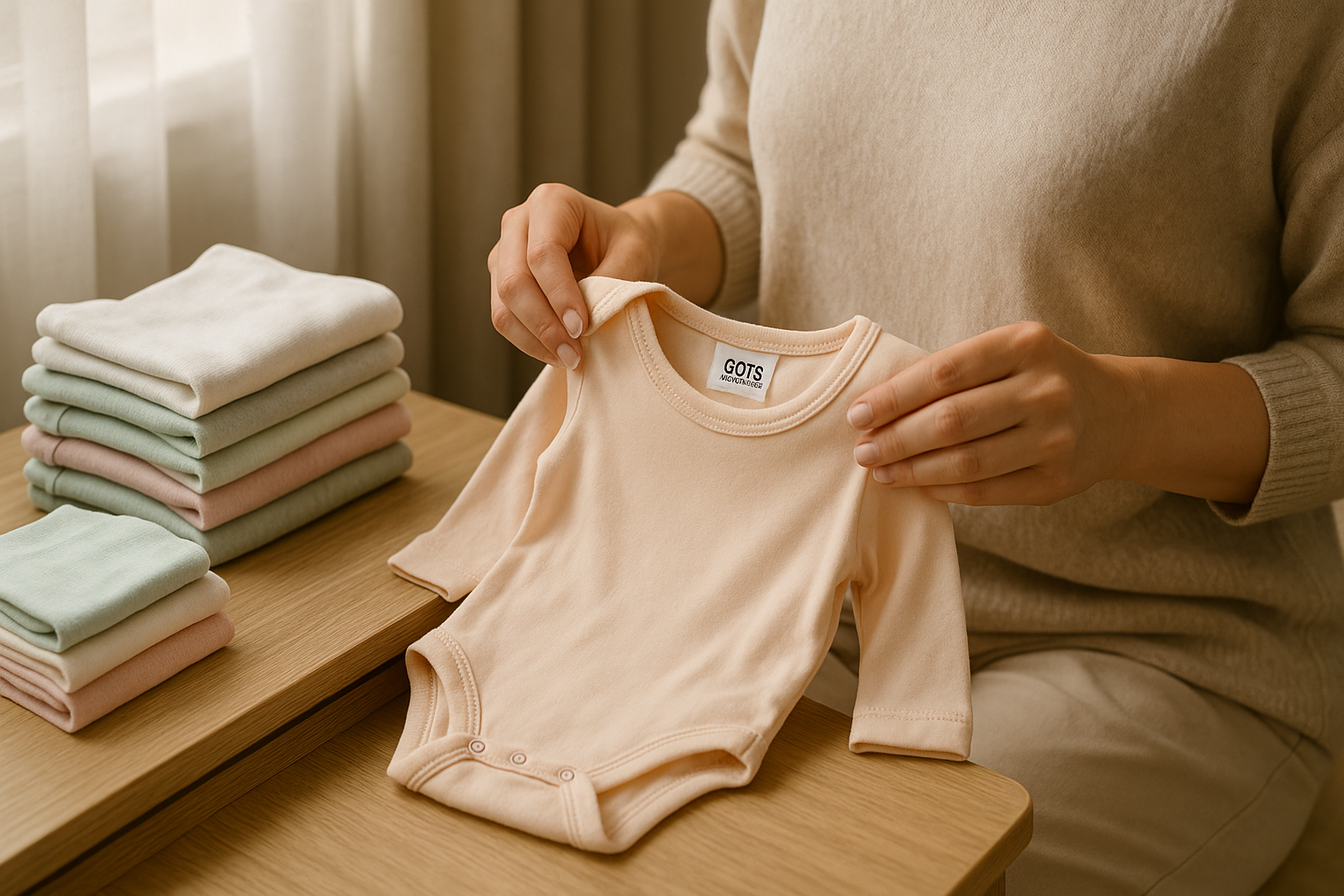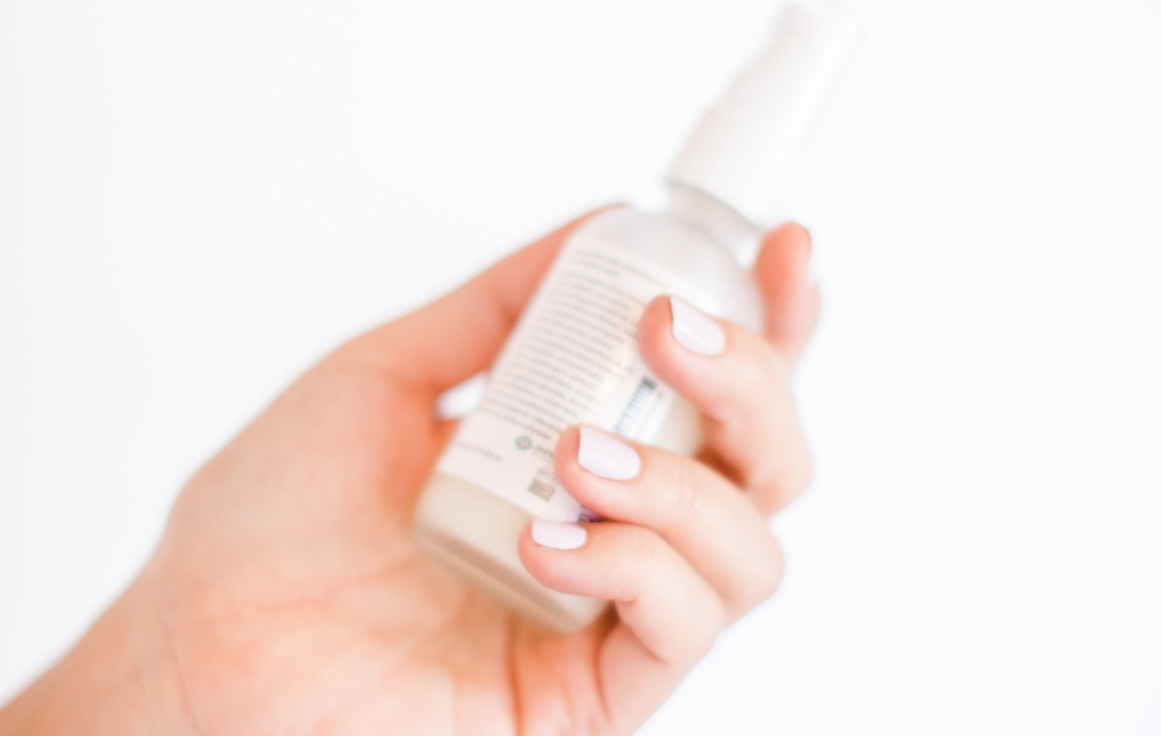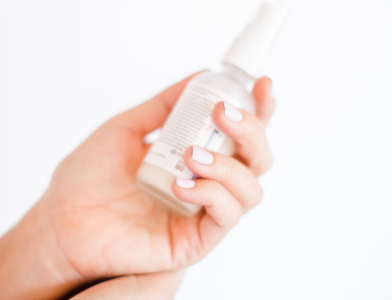You may be choosing organic baby clothes believing they’re the safest choice. But is that label actually protecting your baby? As Dr. Ivon Burkart, a toxicologist with decades of experience, I can tell you: most parents don’t realize how misleading textile labels can be.
Why Your Baby’s Skin Needs Extra Protection
Baby skin is about 30% thinner than adult skin, making it more absorbent and vulnerable. Chemicals in clothing don’t just sit on the surface – they can pass into your baby’s bloodstream. Babies also have immature detox systems, so residues from fabrics can build up and linger longer in their bodies.
Organic Cotton: Not the Whole Story
When a label says “100% organic cotton,” it only describes how the cotton was grown, not how it was processed afterward. Many organic cotton garments are bleached with chlorine, dyed with heavy metals, or treated with wrinkle-resistant finishes containing formaldehyde (the same chemical used for embalming). None of these treatments have to be labeled. This is why the term “organic” can be just marketing or, in other words, greenwashing.
What Labels and Certifications Actually Mean
- GOTS (Global Organic Textile Standard): The most reliable certification. It covers how cotton is grown and processed—no azo dyes, formaldehyde, or heavy metals allowed.
- OCS (Organic Content Standard): Less strict but still helpful. Look for this if GOTS isn’t available, but best used in combination with other certifications.
- OEKO-TEX 100: It focuses on limiting hazardous substances only in the finished product not throughout the supply chain.
- OEKO-TEX Organic Cotton: Certifies that garments are made with organic cotton. Does not apply to hazardous chemicals in finished garments.
For kids’ pajamas in the U.S., always look for that big yellow tag showing they were not treated with flame retardants.
Red Flags When Shopping
- Wrinkle resistant
- Stain resistant
- Flame retardant
These phrases almost always signal chemical coatings. Also avoid products listing PFAS, formaldehyde, or flame retardants. These residues don’t fully wash out and will continue to transfer onto your baby’s skin.
Trusted Brands for Safer Baby Clothes
- Burt’s Bees Baby, Honest Baby: Affordable basics and pajamas.
- Primary: Colorful, organic cotton pajamas, especially during sales.
- Hanna Andersson: Organic clothes for kids up to age 14.
- Mightly Kids: Budget friendly and GOTS certified organic cotton picks.
- Quince: Certified basics for the whole family at lower prices.
Regardless of brand, always check fabric content labels. Flip garments inside out to see these details. Think of it like reading ingredient lists on food or personal care products—this is about transparency.
What to Do If You Already Have Questionable Clothes
- Wash new clothes before first use.
- Soak them in baking soda and water for 30 minutes (use warm water if possible).
- Add vinegar to the rinse cycle.
- Skip dryer sheets and fabric softeners (they contain hormone disruptors and artificial fragrances).
- Use wool dryer balls and fragrance-free detergents instead.
- Pure Haven laundry powder (save 15% off your first order with code Pure15)
- Blueland fragrance free laundry detergent tablets 15% off with this link)
These steps can’t remove everything, but they do reduce some surface residues and lower risk.
Take Control: Simple Steps, Real Confidence
Greenwashing targets parents who want the best for their families. But you don’t have to fall for clever marketing. You don’t need to spend big or throw out your current wardrobe. Just be intentional, check for true certifications, read fabric tags, and understand what claims actually mean.
Remember: Organic cotton isn’t a guarantee of safety. Look beyond the labels to protect your baby.
Low Tox Kid’s Clothes, Socks, and Underwear
Links provided on this page are affiliate links, which means if you click on it and make a purchase I may earn commission. The commission comes at no cost to you and allows me to continue my research. Note- I only recommend products that I personally use and/or trust. I will always disclose whether a link is an affiliate link, and never recommend products solely for the purpose of commission.
References
- Stamatas GN, Nikolovski J, Luedtke MA, Kollias N, Wiegand BC. Infant skin microstructure assessed in vivo differs from adult skin in organization and at the cellular level. Pediatr Dermatol. 2010 Mar-Apr;27(2):125-31. doi: 10.1111/j.1525-1470.2009.00973.x. Epub 2009 Oct 4. PMID: 19804498.



